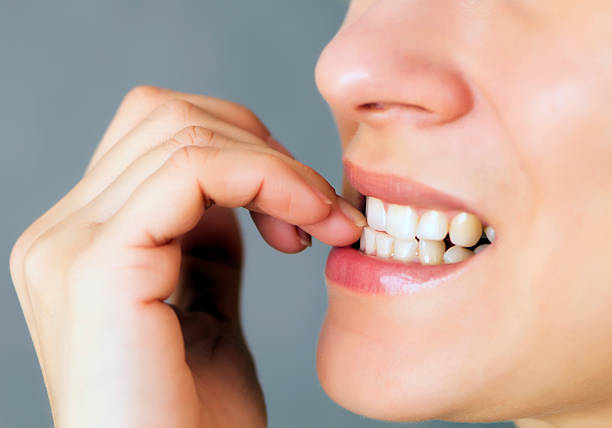Nail-biting, also known as onychophagia, is a common habit that affects people of all ages worldwide. While nail-biting may seem harmless on the surface, it can have significant physical and psychological consequences, impacting both the appearance of the nails and the individual’s overall well-being. In this comprehensive guide, we’ll explore the psychological triggers behind nail-biting, delve into the potential consequences, and discuss effective strategies for overcoming this habit. By understanding the underlying causes and implementing targeted interventions, individuals can break free from nail-biting and cultivate healthier habits for long-term well-being.
Understanding Nail-Biting:
- Definition and Prevalence:
- Nail-biting involves the compulsive biting or chewing of the fingernails or toenails, often resulting in shortened, jagged nails and damaged cuticles.
- Nail-biting is a prevalent habit, with estimates suggesting that 20-30% of the population engages in nail-biting at some point in their lives.
- Triggers and Contributing Factors:
- Stress and Anxiety: Nail-biting is often triggered or exacerbated by stress, anxiety, boredom, or other negative emotions. It may serve as a coping mechanism or a way to relieve tension.
- Perfectionism: Individuals with perfectionistic tendencies may engage in nail-biting as a response to feelings of dissatisfaction or the need to maintain control over their appearance.
- Habitual Behavior: Nail-biting can become ingrained as a habitual behavior, reinforced by repetition and environmental cues such as boredom or nervousness.
- Consequences of Nail-Biting:
- Physical Consequences: Chronic nail-biting can lead to a range of physical issues, including damaged nails, bleeding cuticles, infections, and increased risk of ingrown nails.
- Psychological Impact: Nail-biting can negatively impact self-esteem, causing embarrassment or shame about the appearance of the nails. It may also contribute to feelings of stress, anxiety, or frustration.
Psychological Triggers Behind Nail-Biting:
- Stress and Anxiety:
- Nail-biting often serves as a maladaptive coping mechanism for managing stress, anxiety, or other negative emotions.
- Individuals may turn to nail-biting as a way to alleviate tension or distract themselves from anxious thoughts or situations.
- Perfectionism and Body Image:
- Perfectionistic tendencies and concerns about appearance may drive individuals to engage in nail-biting as a means of exerting control over their appearance.
- Negative self-perceptions or dissatisfaction with the appearance of the nails may contribute to feelings of inadequacy or self-consciousness.
- Habitual Behavior:
- Nail-biting can become a deeply ingrained habit, reinforced by repetition and environmental cues such as boredom, stress, or nervousness.
- Over time, nail-biting may occur automatically, without conscious awareness, making it challenging to break the habit.
Strategies for Overcoming Nail-Biting:
- Identify Triggers:
- Pay attention to the situations, emotions, or environmental cues that trigger nail-biting behavior. Keeping a journal can help identify patterns and underlying triggers.
- Develop Coping Strategies:
- Practice healthy coping strategies for managing stress, anxiety, or boredom, such as deep breathing exercises, mindfulness meditation, physical activity, or engaging in hobbies.
- Substitute Behaviors:
- Replace nail-biting with alternative behaviors that provide sensory stimulation or stress relief, such as squeezing a stress ball, chewing gum, using a fidget toy, or applying nail polish with a bitter taste.
- Practice Relaxation Techniques:
- Incorporate relaxation techniques into your daily routine to reduce stress and anxiety levels. Techniques such as progressive muscle relaxation, guided imagery, or yoga can help promote relaxation and reduce the urge to nail-bite.
- Set Realistic Goals:
- Set realistic and achievable goals for reducing nail-biting behavior. Start by gradually decreasing the frequency or intensity of nail-biting episodes, rather than attempting to stop abruptly.
- Reward Progress:
- Acknowledge and reward yourself for progress made in reducing nail-biting behavior. Celebrate milestones and achievements, no matter how small, to reinforce positive changes.
- Seek Support:
- Reach out to friends, family members, or a therapist for support and encouragement. Sharing your goals and progress with others can provide accountability and motivation.
- Professional Intervention:
- In some cases, professional intervention may be necessary to address underlying psychological factors contributing to nail-biting behavior. Cognitive-behavioral therapy (CBT), habit-reversal training, or other therapeutic approaches can help individuals develop healthier coping mechanisms and break the cycle of nail-biting.
Conclusion:
Nail-biting is a common habit that can have significant physical and psychological consequences. While the underlying causes of nail-biting may vary from person to person, stress, anxiety, perfectionism, and habitual behavior are common triggers. By understanding the psychological factors contributing to nail-biting and implementing targeted strategies for change, individuals can break free from this habit and cultivate healthier coping mechanisms. Whether through stress management techniques, substitution behaviors, or professional intervention, overcoming nail-biting is possible with persistence, patience, and support. By addressing the root causes and implementing effective solutions, individuals can achieve healthier nails and improved well-being for the long term.
Read More: BTS’s Origin Stories: How Each Member Found Their Way to Big Hit Entertainment
